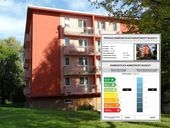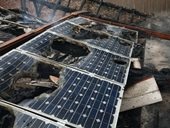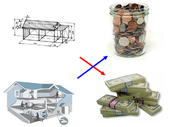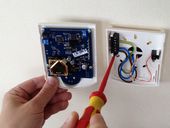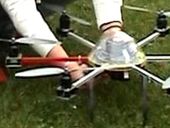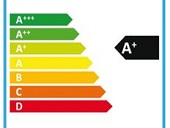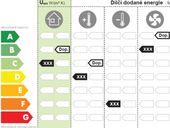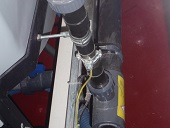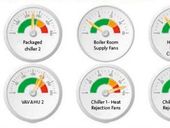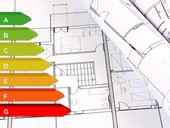In this time development of a security alarm and emergency systems is very important, mainly due to the ever increasing unemployment. It has increased since 2008 according to the Czech Statistical Office of the 4.44 % to 7.4 % which will lead to an increase in crime. For the last few years, although recorded crime reduced by 4 %, but its growth is predicted. This is also why your home, business or auto secure as possible. And because usually rule is that at a time when there is a new method of detection, there is a new way of sabotage and it still necessary to continue developing and improving current technology of intrusion and hold-up systems.
Archiv článků od 8.4.2013 do 19.8.2013
Every construction project passes through its life cycle, from initial idea, through the design, implementation, or to change the construction and use to disposal. Article highlights the interdependence of the life cycle of buildings with durability and amortization of buildings and does not omit important perspective on this issue, which is the economic expression of the parts of individual cost items arise during the life cycle.
Recently broad media in the Czech Republic coverage on hazards from PV systems to fire fighters. Similar situation was in Germany two years ago. That is why Fraunhofer-Institut für Solare Energiesysteme ISE together with TÜV Rheinland and other partners implemented a research project „Assessment of fire risks in PV systems and development of safety concepts for risk mitigation“. The project concluded that the fire risk of PV system is much less than it is publicly alleged in Germany.
There is a small risk that fires can be started by PV components. This risk can be reduced by careful installation, initial verification i.e. inspection and testing, periodic verifications, (yield) monitoring to detect degradation problems, and verification of test procedures and maintenance requirements for conventional AC- components. Overall conclusion is that PV systems are not maintenance free.
Whole presentation from EU PVSEC (in English).
The importance of maintenance of buildings in the operation of real estate principles Facility management is huge. Properly and efficiently carried out maintenance of buildings helps to smooth and especially trouble-free operation, respectively use of the buildings. The effort of each owner, respectively operator is to make the operation, respectively. Use benefited maximum benefits. The aim of this article is to define a species, processes and other forms of maintenance that his efforts will help streamline.
This article aims to introduce Facility management as defined by standard EN 15221, to describe the development of this field, to determine its target, to identify ways in which the Facility management is implemented, to define the level of management where processes are managed and finally clarify the position and mission of the Facility manager, whether the service recipient or the provider. This article summarizes the basic facts and information about the dynamically developing field, which over time becomes an integral part of our working life.
The question of reliability and at the same time quality of security systems is the most important criterion for selecting a particular type of security. The most dangerous from this point of view are perimeter systems that virtually in all modifications and technologies are greatly subject to the influence of external conditions and distractions. Due to this fact many false alarms quite often prevents their actual use (at least in civilian areas). This is why we (in the Laboratory of security systems Faculty of Engineering CZU) were searching for a way how to increase the efficiency of employment of the discussed perimeter systems. We wanted to enable problem-free utilization in the commercial area at a moderate price if possible. The solving of the problem by way of minimizing false alarms failed when changed to a different physical principle of detectors. Therefore we chose a different approach – we made a perimeter system with movable and automatic alarm verification.
Change of the standard ČSN 73 0810/Z1 (valid from 1st June 2012) introduces a new term - so-called „equivalent DP1“.This represented an exception in the classification of non-combustible components for some products. This exception was cancelled by the Change ČSN 73 0810/Z3 valid from 1st July 2013.
Of course, the social order is low-energy buildings to be also effective. However, this objective cannot be only declarative nature, but must be supported by correct results showing that the investment plan will generate real economic effect in the form of profit or positive cash flow for an investor or user for the period considered.
Centralized provision of hot water in the apartment building is associated with the specifics of four (commercial space, unmetered amount of heat for the preparation and distribution of hot water, the limits of specific consumption of heat, heat supply technology for domestic hot water through residential transfer stations).
In relation with the implementation of the revised EU Directive 2010/31/EU on the energy performance of buildings are currently changing some of Czech legal regulations and new methodology for energy performance assessment is introduced . This article focuses on an example rating the standard family house with conventional solution of building envelope and technical systems, using the new evaluation method. For this object will be also an obligation to issue an energy performance certificate as required by the Consolidated Act No. 406/2000 Coll., as amended.
The author determines this article to parties interested in business in the field of the technical infrastructure building management. He provides the fundamental information as concerns the provision of technical services at the real estate management in the area of the building technical facility in all buildings of the client of the services provider in the formof the facility management. The author deals above all with buildings serving exclusively for the administrative purposes within the range from large buildings in the possession to small workplaces in leased buildings.
Article discusses the possibility of using gray water in buildings and as the example cites the hotel Mosaic House in Prague. This hotel is the first building in the Czech Republic, where they were used gray water for flushing toilets and for cleaning. The article also described the gray water treatment technology.
One of the reasons why building with almost zero energy consumption does not meet the expectation is that it may be too complicated. Another factor is that the project may be too optimistic, and other unforeseen factors, such as office equipment, which actually dominates the energy balance of the building.
The European Union is committed to reducing energy consumption in the built environment. Since the heating, ventilation and air conditioning (HVAC) represents approximately 11% of the total electricity consumption in Europe, these systems are an important part of the commitment of the EU. In this article, we discuss two specific aspects of HVAC energy efficiency, both are based on that understanding how the commercial buildings work in real life is the first step towards reducing energy consumption.
In connection with the implementation of the revised European Directive 2010/31/EU on the energy performance of buildings, certain legislative provisions such as Decree No. 148/2007, Coll. Replaced by Decree No. 78/2013, Coll. are currently amending. This article is focused on the changes associated with the energy certification of buildings, the "ENB", from the perspective of changes in the evaluation ENB.
Today's world is connected with use of computer technology. Of course, there is an increase of security threats that are related to computer and computer networks. It is not just about IT security systems, but in terms of security objects and their parts into which access is restricted whether it be for any reason. Therefore, the user identification is one of the most important parts of the security access systems. To work on the development of functional, reliable and yet not too financially demanding system, is needed to be familiar with existing systems.
zpět na aktuální články


